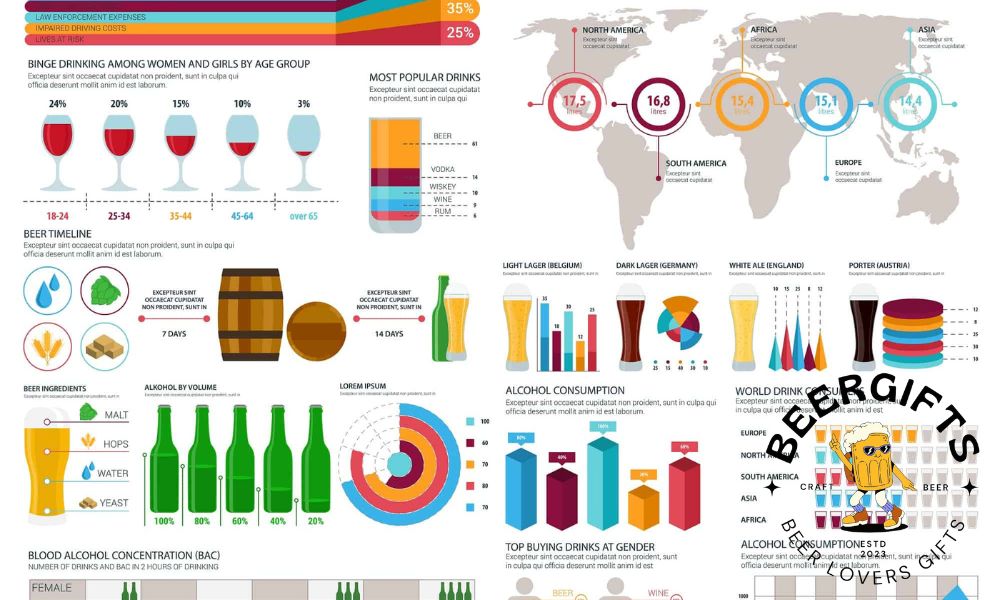Discover the surprising truth behind how many beers it takes to feel intoxicated based on your body weight. Find out now!

Image courtesy of COPPERTIST WU via Pexels
Table of Contents
When it comes to consuming alcohol, one of the questions that often arises is, “How many beers does it take to get drunk?” The answer to this question is not as simple as one might think, as it heavily depends on various factors such as individual tolerance levels, alcohol metabolism, and other influencing factors. In this blog post, we will delve into the science behind alcohol consumption and intoxication to help you better understand your own limits and make informed decisions about drinking.
Alcohol Metabolism
alcohol metabolism refers to the process by which the body breaks down and eliminates alcohol. When you consume a beer, the alcohol is absorbed into the bloodstream through the stomach and small intestine. From there, the liver works to metabolize the alcohol using enzymes. The rate at which alcohol is metabolized can vary among individuals and is influenced by factors such as genetics, liver health, and body composition.
Understanding alcohol metabolism is crucial in determining how many beers it takes to get drunk. Generally, the average person metabolizes about one standard drink (equivalent to one beer) per hour. However, this rate can be affected by various factors, such as the presence of food in the stomach, the type of alcohol consumed, and individual differences in enzyme activity.
Individual Tolerance Levels
Alcohol tolerance refers to the ability of an individual to consume alcohol without experiencing significant intoxication. Tolerance levels can vary widely among individuals and are influenced by factors such as age, gender, genetics, and frequency of alcohol consumption. Generally, individuals who regularly consume alcohol may develop a higher tolerance over time compared to occasional drinkers.
It’s important to recognize that alcohol tolerance is not a measure of how intoxicated someone will get after consuming a certain amount of alcohol. While some people may be able to consume multiple beers without feeling drunk, others may reach their limit after just one or two drinks. Understanding your own tolerance levels is key to drinking responsibly and avoiding dangerous levels of intoxication.
Factors Influencing Intoxication
Several factors can influence how quickly and severely a person becomes intoxicated after consuming alcohol. Gender differences play a significant role, as women tend to have a higher blood alcohol concentration (BAC) after consuming the same amount of alcohol as men. This is due to factors such as body composition, enzyme activity, and hormonal differences.

Image courtesy of www.beergifts.org via Google Images
Body weight and composition also play a crucial role in determining alcohol intoxication levels. Generally, individuals with a higher body weight and muscle mass tend to metabolize alcohol more efficiently than those with lower body weight or higher body fat percentage. This means that a person’s weight can impact how many beers it takes to get drunk.
Additionally, mixing alcohol with medications, illicit drugs, or other substances can intensify the effects of alcohol and lead to increased intoxication levels. It’s important to be aware of potential interactions between alcohol and other substances and to avoid mixing alcohol with substances that can pose a risk to your health.
Conclusion
Understanding how many beers it takes to get drunk is not a one-size-fits-all answer. It is influenced by a variety of factors, including alcohol metabolism, individual tolerance levels, and other influencing factors. By gaining a better understanding of these factors, you can make more informed decisions about your alcohol consumption and practice responsible drinking habits.
Remember, it’s always important to drink in moderation, know your limits, and prioritize your safety and well-being. By being aware of the science behind alcohol consumption and intoxication, you can enjoy alcohol responsibly and prevent the negative consequences of excessive drinking.
FAQ
How many beers does it take to get drunk?
Answer 1: The number of beers needed to feel drunk varies depending on factors such as body weight, metabolism, and tolerance levels. Generally, it is recommended to drink responsibly and know your limits to avoid excessive intoxication.
Does body weight impact how quickly you get drunk?
Answer 2: Yes, body weight does play a role in alcohol metabolism. Individuals with higher body weight and muscle mass tend to metabolize alcohol more efficiently, requiring more drinks to feel intoxicated compared to those with lower body weight.
How does alcohol tolerance affect intoxication levels?
Answer 3: Alcohol tolerance varies among individuals and can influence how intoxicated someone feels after consuming alcohol. Regular drinkers may develop a higher tolerance over time, while occasional drinkers may feel the effects of alcohol more quickly with fewer drinks.
Can mixing alcohol with other substances increase intoxication?
Answer 4: Yes, mixing alcohol with medications, illicit drugs, or other substances can intensify the effects of alcohol and lead to increased intoxication levels. It is important to be aware of potential interactions and avoid mixing alcohol with substances that can pose a risk to your health.
Generated by Texta.ai Blog Automation
Leave a Reply